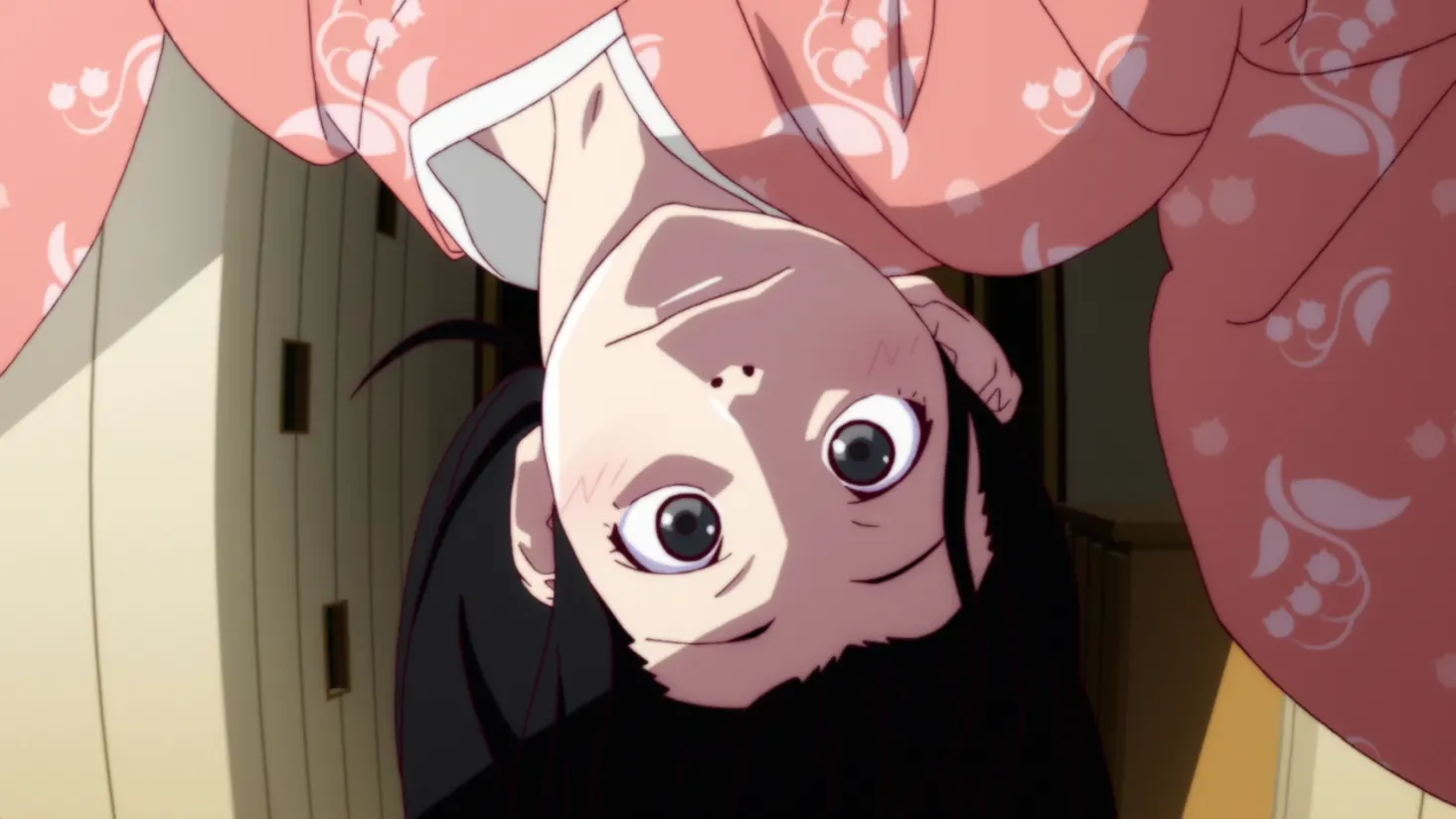
After barely surviving incestuous orgasms via dental implements, I am happy to report that my experience of Nekomonogatari: Black (follow-up to my previously reviewed Nisemonogatari Part 1 and Part 2) involved significantly less oral perversion and 300% more non-jailbait cat-girls. Yay!
This chapter flashbacks to events prior to the original Bakemonogatari’s first episode (whole series reviewed here and here), but is still not the first chronological installment and therefore much of the backstory is only hinted at rather than fully explained.
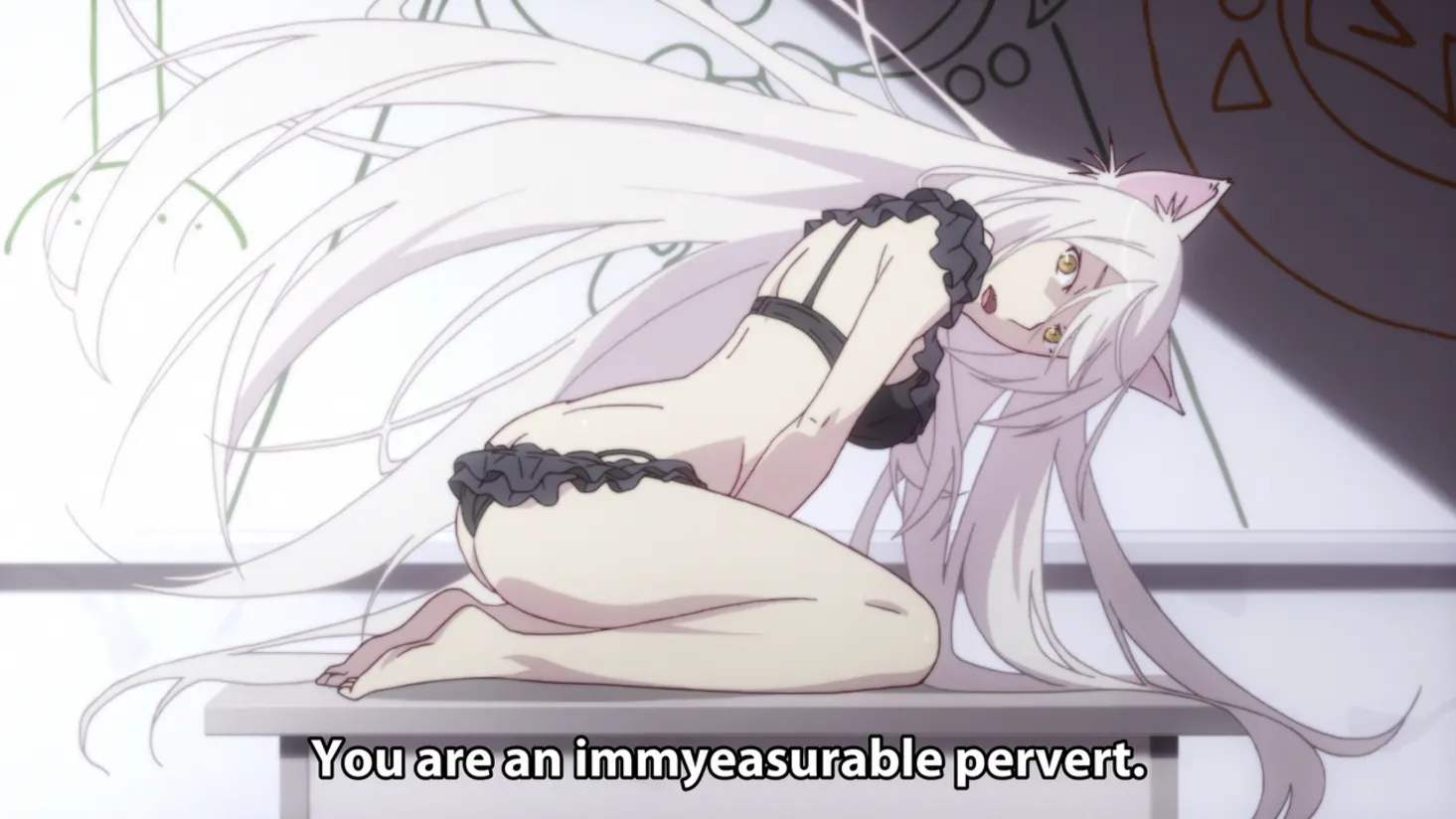
Although he has mostly reverted back to humanity, part-vampire main character Koyomi Araragi has been left with incredible powers of regeneration whilst being inextricably tied to Shinobu, a previously adult vampire who has regressed into a childlike body with personality to match. (Mentor figure Meme Oshino infers this somehow occurred at least partly due to Koyomi’s wishes/cognition.)
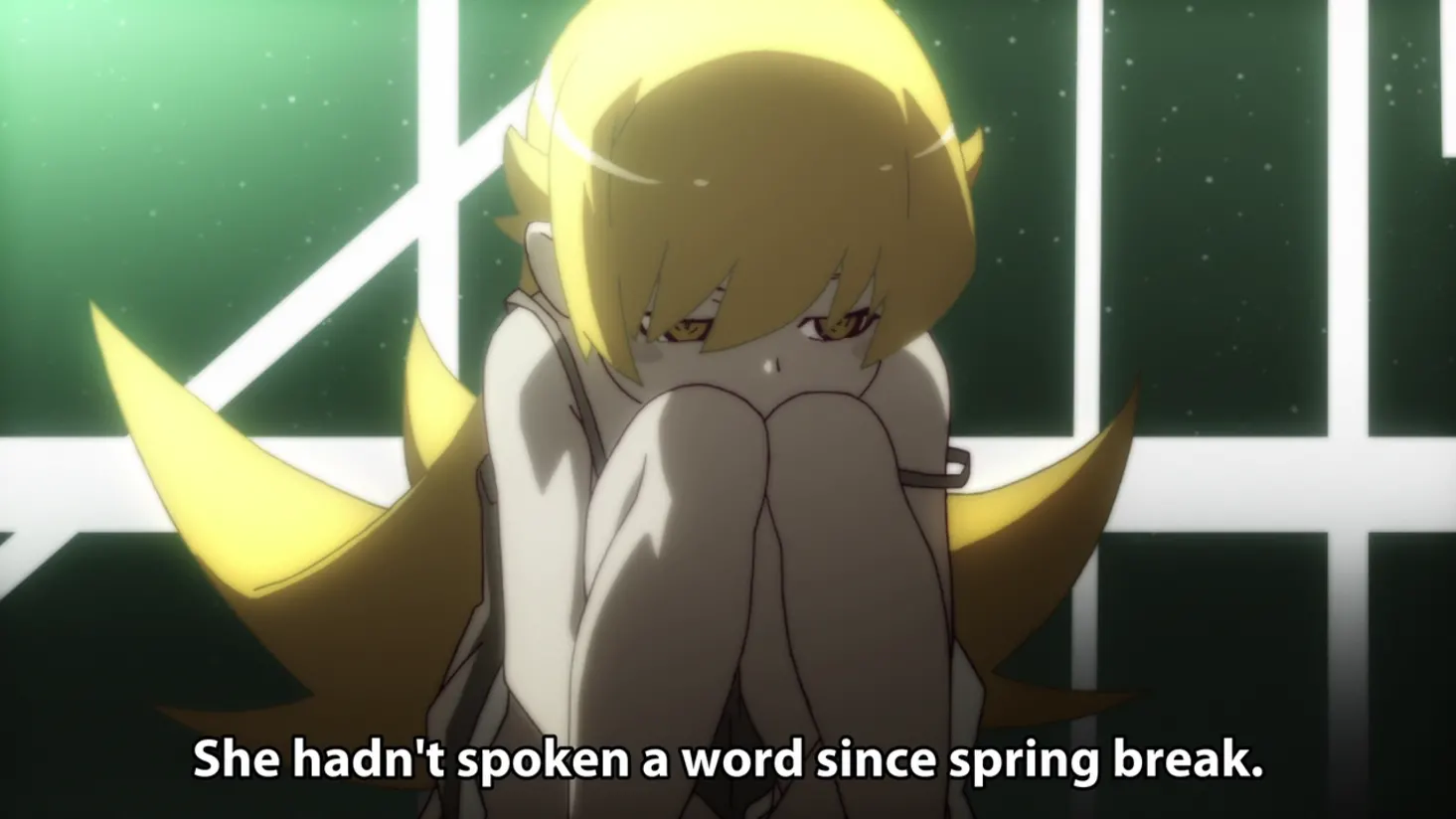
Nekomonogatari: Black is set during Golden Week, part of the Japanese calendar with a concentration of public holidays that fall between April 29th and May 5th. Children get time off school and many businesses allow their employees paid holidays. Koyomi’s vampire experience happened a couple of weeks previously during Spring Break and seems to be covered in the yet-to-be-released (at least in the UK) Kizumonogatari trilogy of movies. Had the anime adaptations been produced in light novel publication order, anime-only viewers would have witnessed the full backstory by now. Interestingly, Kizumonogatari was the first novel in the series to be translated into English by Vertical Publishing. Oh well, I can cope with being mildly disoriented.
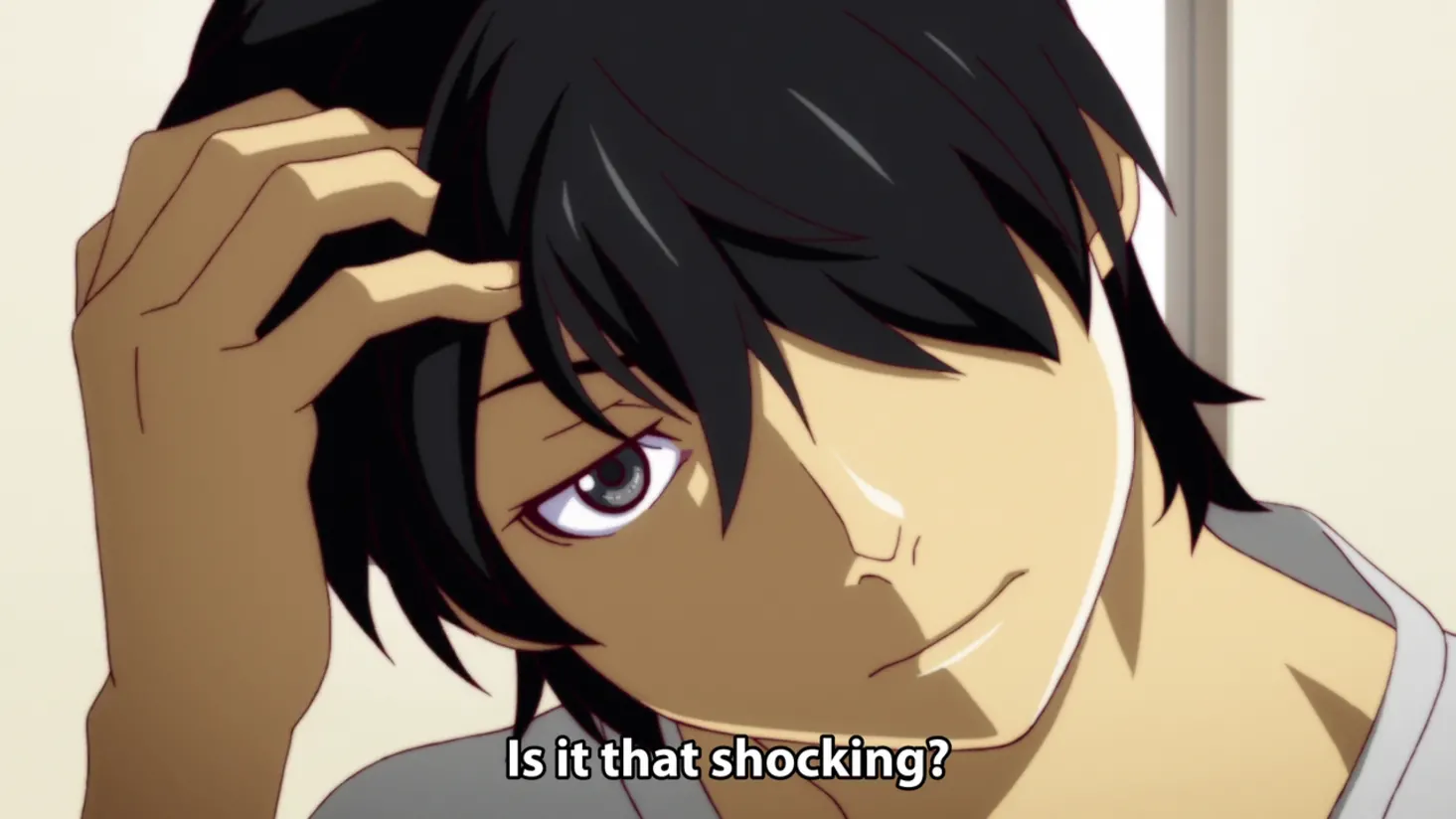
At this point in the timeline, Koyomi has not yet met his eventual girlfriend Hitagi Senjogahara nor little wandering ghost Mayoi Hachikuji. In fact the only other members of Koyomi’s “harem” (apart from the story’s “main girl” Tsubasa) that appear are his younger sisters Karen and Tsukihi. Although there is a lot less creepy sister-lusting weirdness in this story, it’s still present to a small degree but it isn’t so vomit-inducingly intrusive as in Nisemonogatari. This still isn’t a show I could share with friends or in polite company.
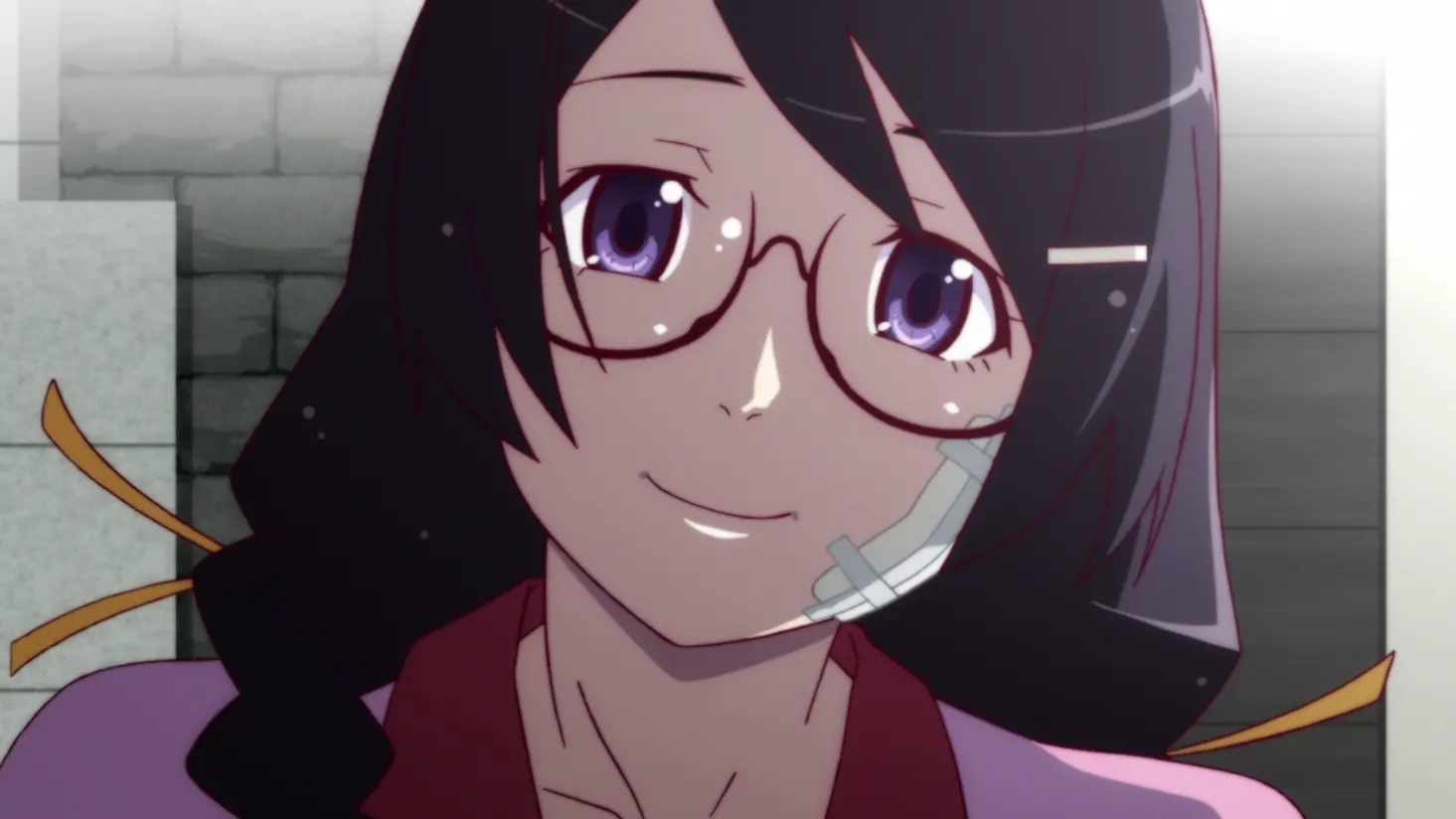
Studious, dependable, intelligent and perpetually smiling Tsubasa Hanekawa is the girl with the problem Koyomi attempts to solve in this story. Koyomi thinks he might love Tsubasa – mainly because he wants to touch her enormous breasts. He also acknowledges that he barely knows her, so goes to his sisters for love advice. Their advice is not particularly useful, especially as for an experiment, 14-year old Tsukihi invites him to grope her breasts and gets upset when he immediately does so. Clearly my brain has already become twisted by Nisemonogatari as I laughed at this scene. I have become tainted. Later, Karen returns home from a literal marathon run, dripping with sweat to the gross extent that she pours a pint of sweat from her shoe upon entering the house. Of course the sweat makes her shorts cling tightly to her ass, so the camera makes a point of sharing it. I’m so broken down by this now, all I can muster is a shrug. Do people really like sweaty little sister ass? Is that a thing now?
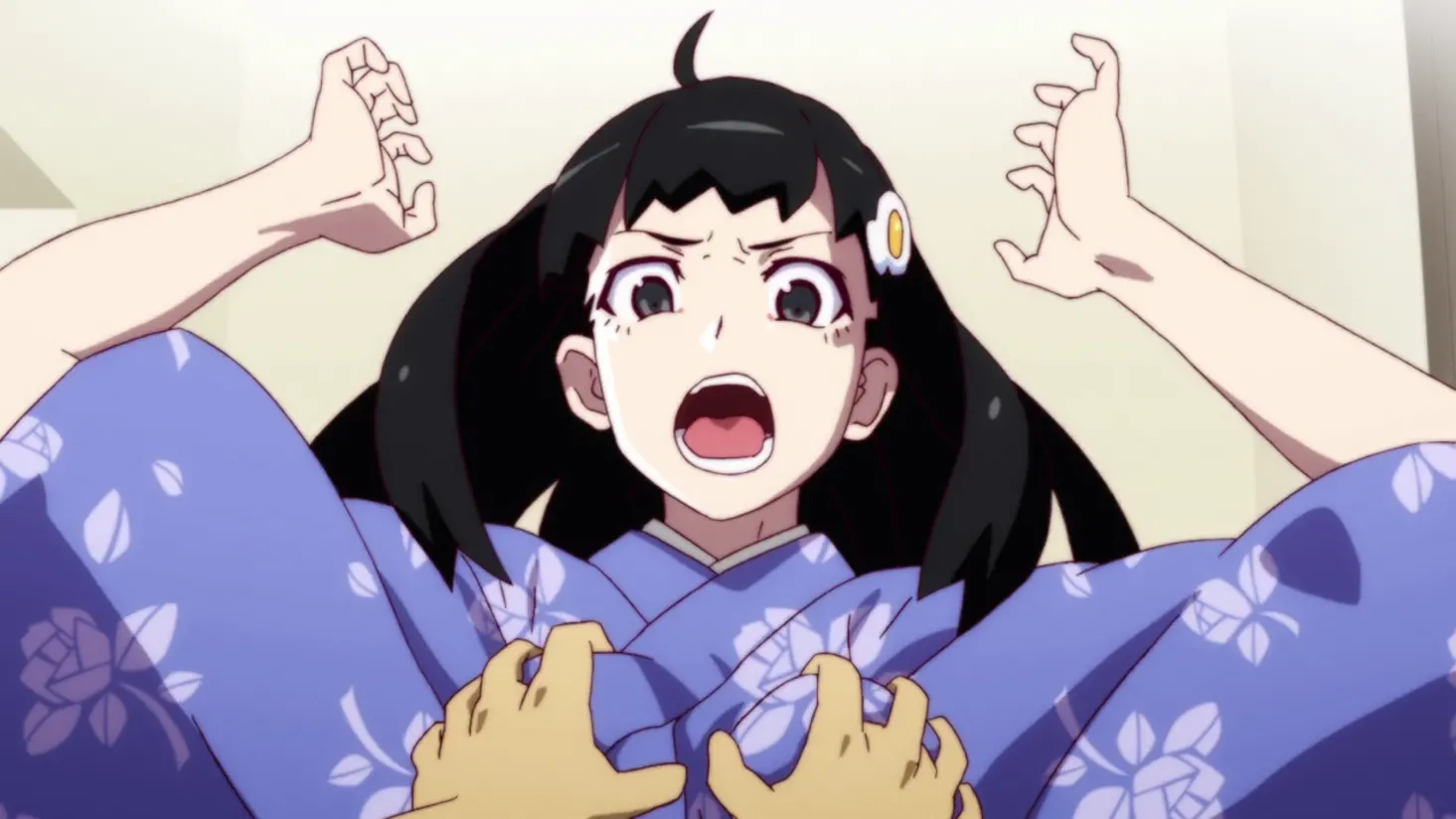
Koyomi does share a bed with his sisters later but this scene is not coded sexually, in fact it happens because Koyomi is so emotionally distressed that he needs their physical closeness. He ends up shoving them onto the floor anyway for them to battle unconsciously over a quilt. I didn’t have a problem with this scene. It shows they are a caring family. And they were all appropriately clothed. We even get a bit of background about the Araragi siblings’ parents – they’re both police officers, and Mrs Araragi even makes an appearance, though we never see her whole face on screen. Nekomonogatari: Black continues the series’ convention of never depicting any people other than the main characters, which does lend the world something of an oddly empty and surreal atmosphere.
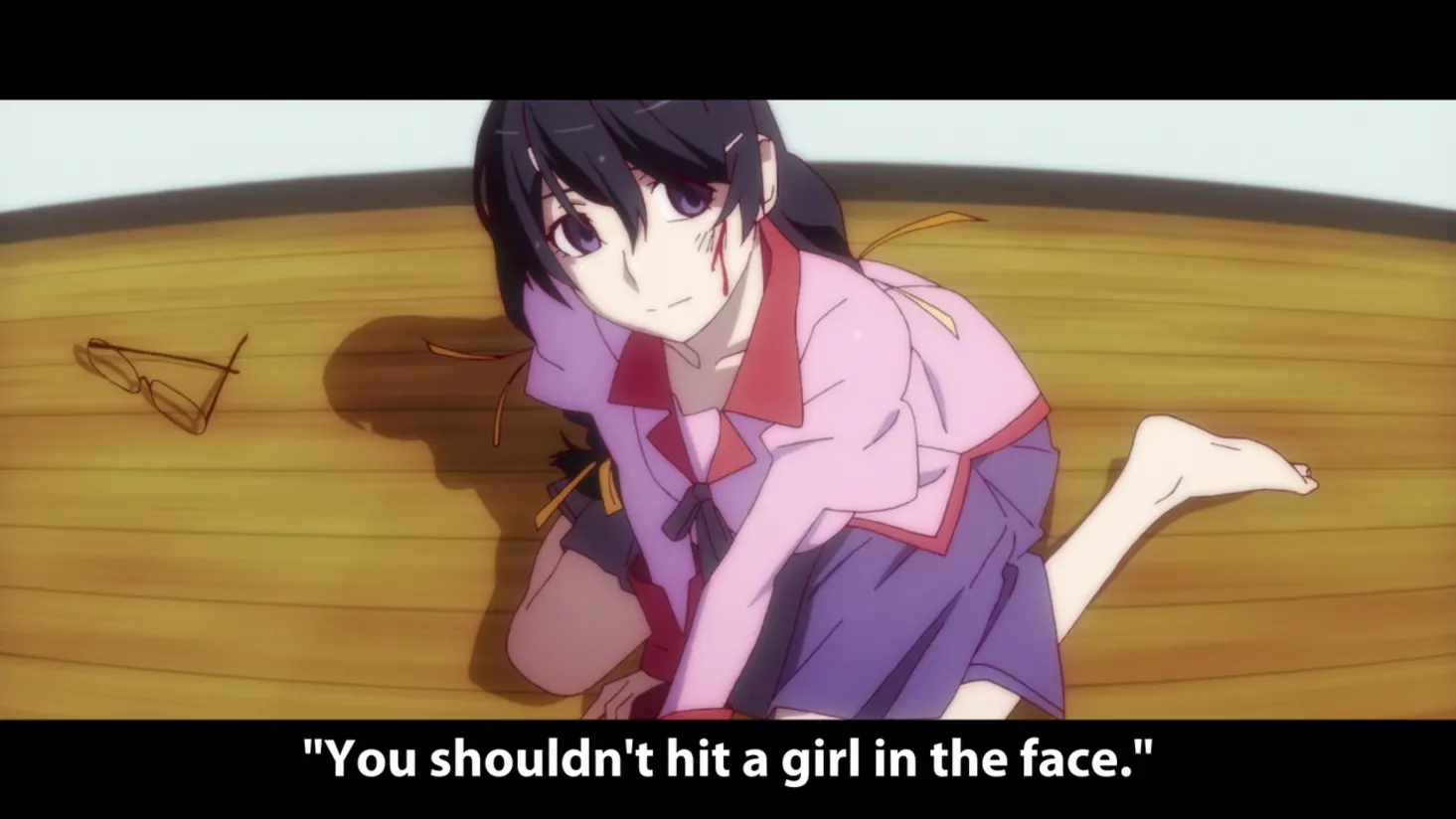
As for the reason for Koyomi’s distress… Tsubasa has an… interesting family. She never knew who her father was, her biological mother committed suicide and left her with a man who wasn’t her father, who then married another woman. (At least, I think this is the situation – it seems a bit convoluted/unclear at times.) Therefore her “parents” are not her biological parents and she has a very distant relationship with them. Tsubasa tries to be a perfect person, and comes across as a saintly “know-it-all” who after many years of living with these adults has finally been physically abused by them – hence the bandage on her face in the first episode.
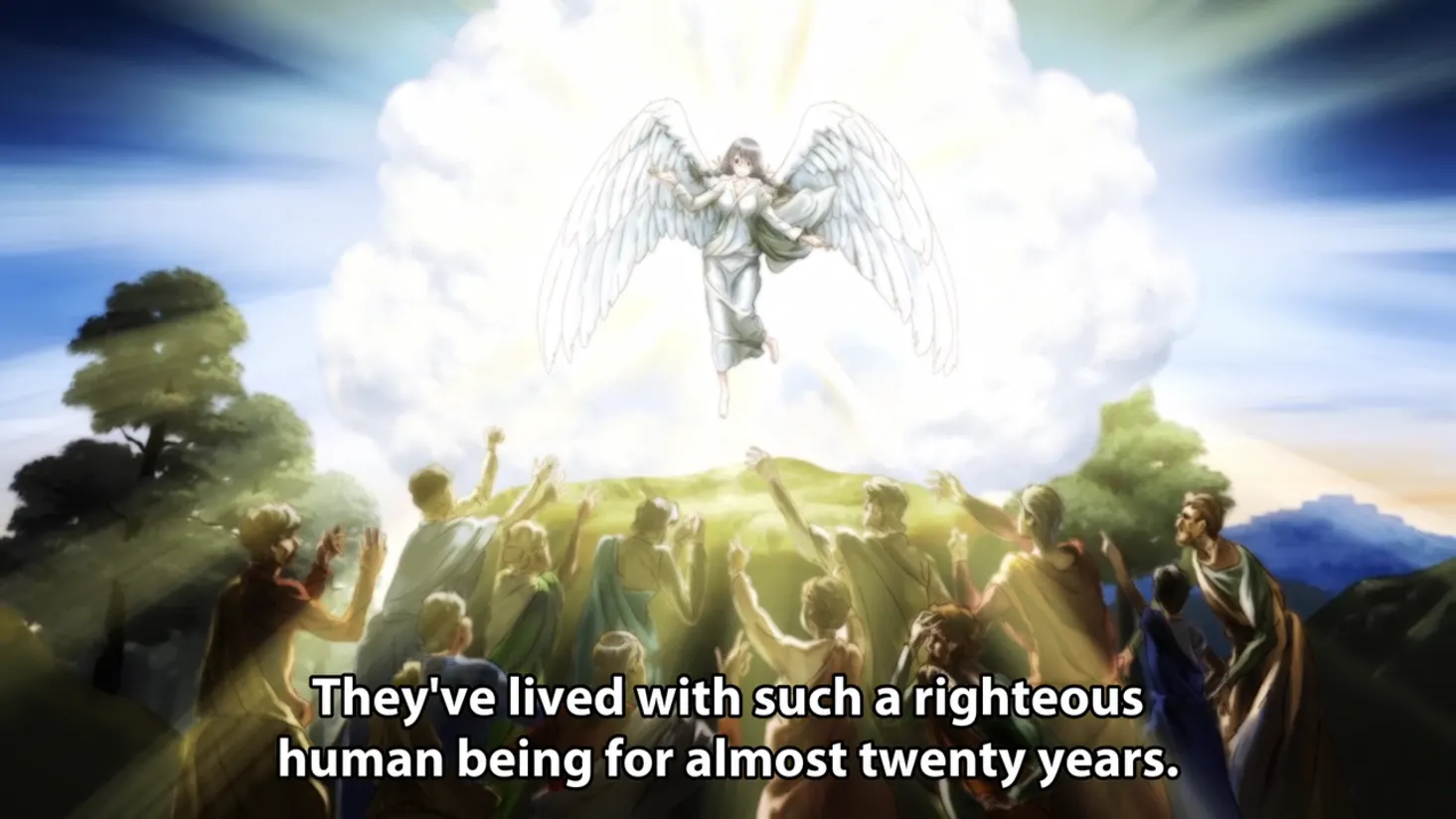
Koyomi is horrified that anyone could abuse the girl he idolises, let alone a family member and at one point breaks into her house out of curiosity and discovers that Tsubasa has no place to call her own within the house – not even her own room. She is an inconvenience, her family seem to live as if she was not part of the household and this distresses him a great deal.
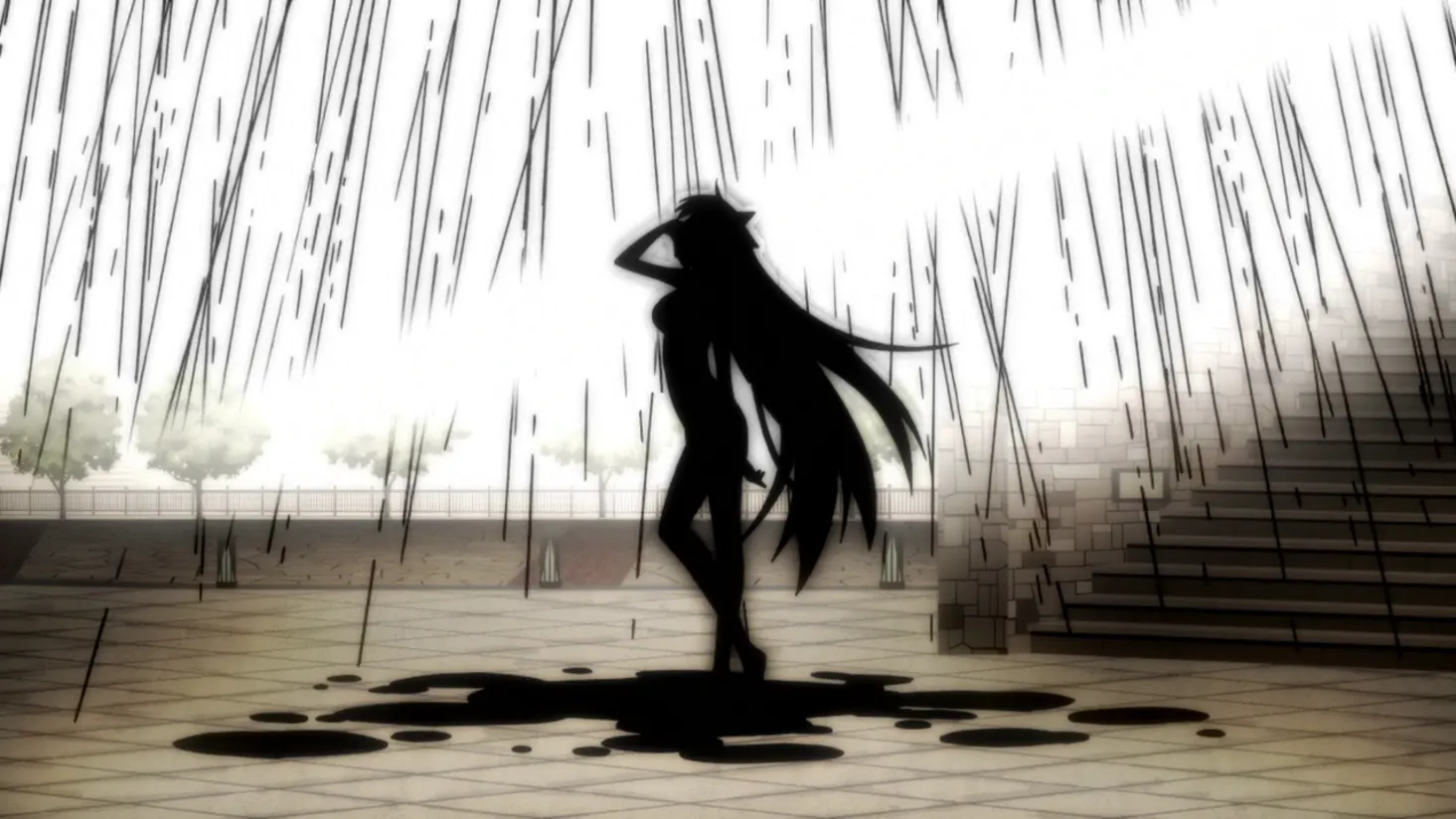
Tsubasa’s herculean attempts to internalise the stress of her family situation leads to her supernatural problem – when she and Koyomi bury a cat they find on the roadside, its spirit possesses her – the “Sawari Neko” which apparently means “meddlesome cat”. The cat spirit helps her to unleash her sublimated desires for revenge against/punishment for her parents. Even after she attacks them though, she goes on to rampage throughout the city, attacking random strangers and draining them of energy. As Oshino explains, the cat spirit should be weak, but coupled with Tsubasa’s will, her intelligence and aptitude for strategy, it is strong enough to overpower even Koyomi. Oshino himself is beaten to a pulp on 20 separate occasions, he reports, by the Tsubasa-cat.
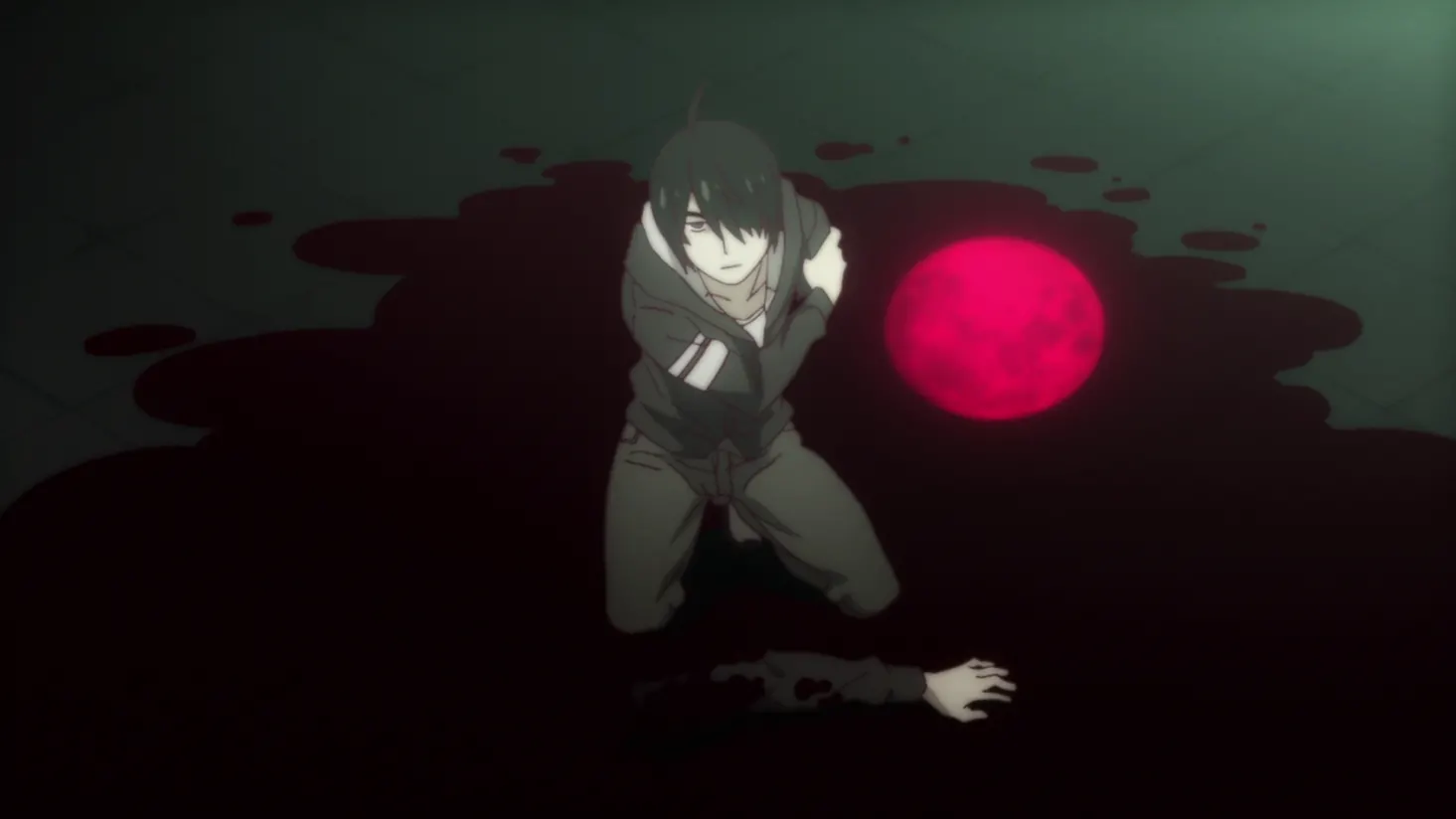
Neokomongatari: Black’s exploration of domestic abuse is interesting and multifaceted, though perhaps also a little problematic. Tsubasa is initially painted as a practically flawless character – unperturbed by adversity and improbably knowledgeable. Her typical catchphrase is “I don’t know everything, I only know what I know.” Koyomi clearly idolises her – and not just for her enormous breasts.
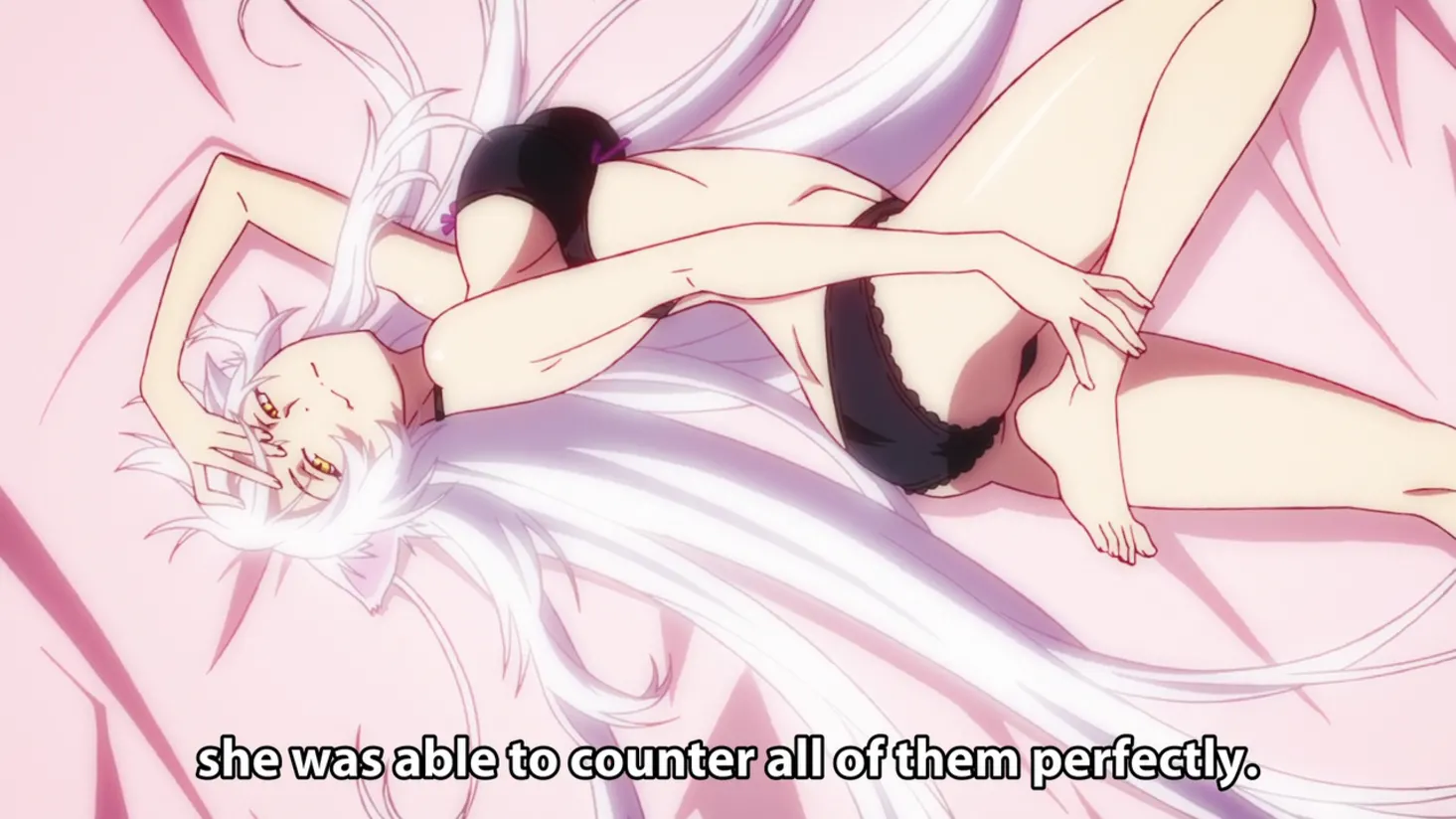
As the story progresses, it soon becomes clear that Tsubasa is not the perfect girl persona that she displays to the world. It is a performance that makes her act so unnaturally that it apparently drives her “father” to beat her. This concept gives me pause to consider – does the author indulge in “victim-blaming” here, or is it not as simple as that? Meme Oshino seems to sympathise with Tsubasa’s parents, stating that because of her perfect know-it-all behaviour, it was inevitable that one day they would snap. Koyomi refuses to see that perspective though – he sees how different his family life is from hers. While he has sisters who love him dearly, and his parents presumably do too, Tsubasa’s parents offer no love, not even a place of her own to lay her head. These people are terrible, no matter how odd their daughter is – as legal guardians they have an obligation to nurture her both mentally and physically, and never to abuse or strike her.
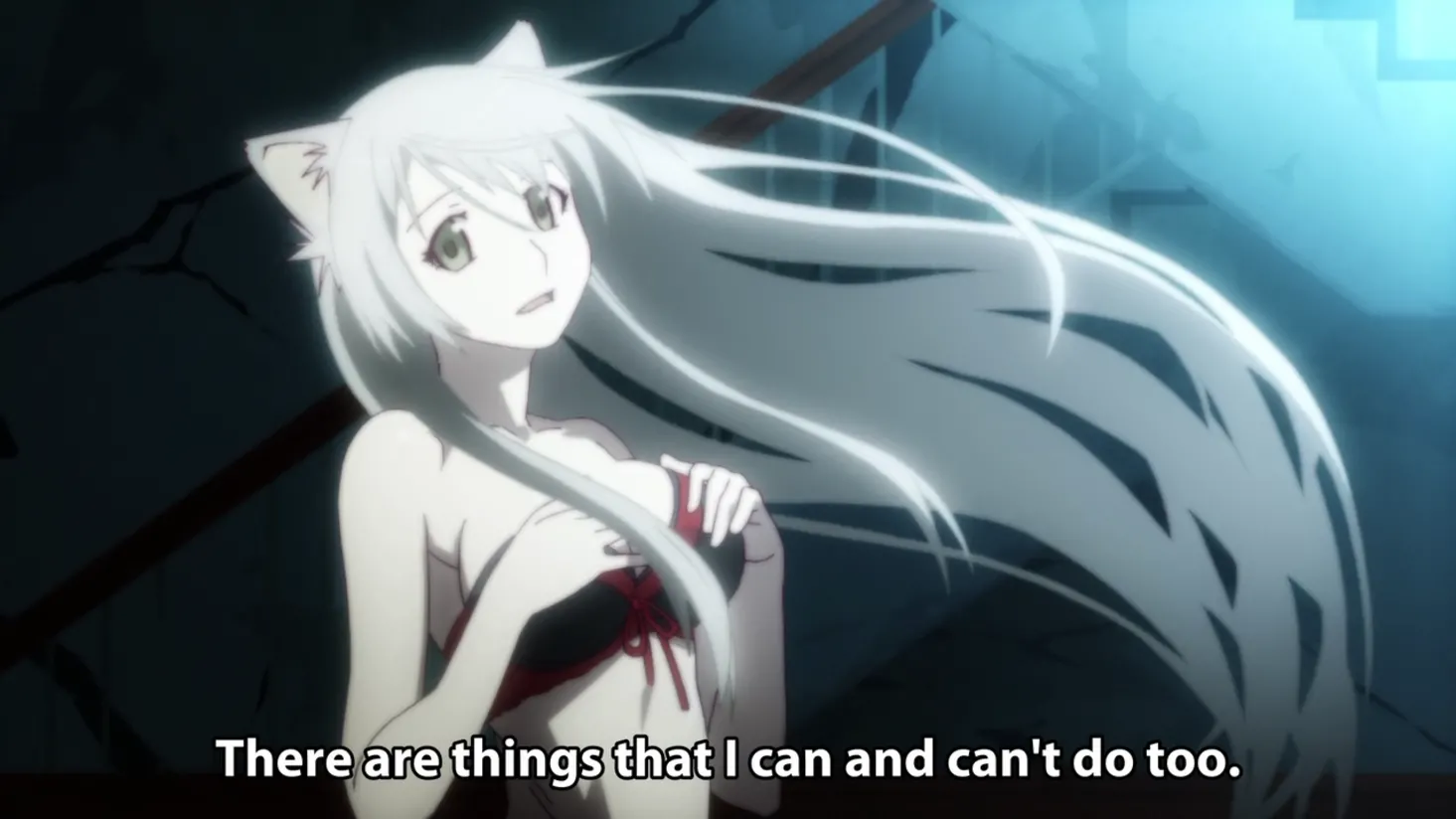
Koyomi assumes that whilst in her cat persona, the cat spirit is in control of Tsubasa’s behaviour. Only towards the climax does he realise that – SPOILER – Tsubasa was in control the whole time. Once the cat had exorcised her stress by attacking her parents, it would have left her had her sublimated desires for violence not been so strong. Think about that for a moment – every other person that Tsubasa-cat attacked was via her own free will. This apparently meek and mild librarian-type girl became a maniac with an appetite for destruction. Perhaps because of this, Koyomi’s seemingly clever plan to separate cat and girl goes horribly wrong.
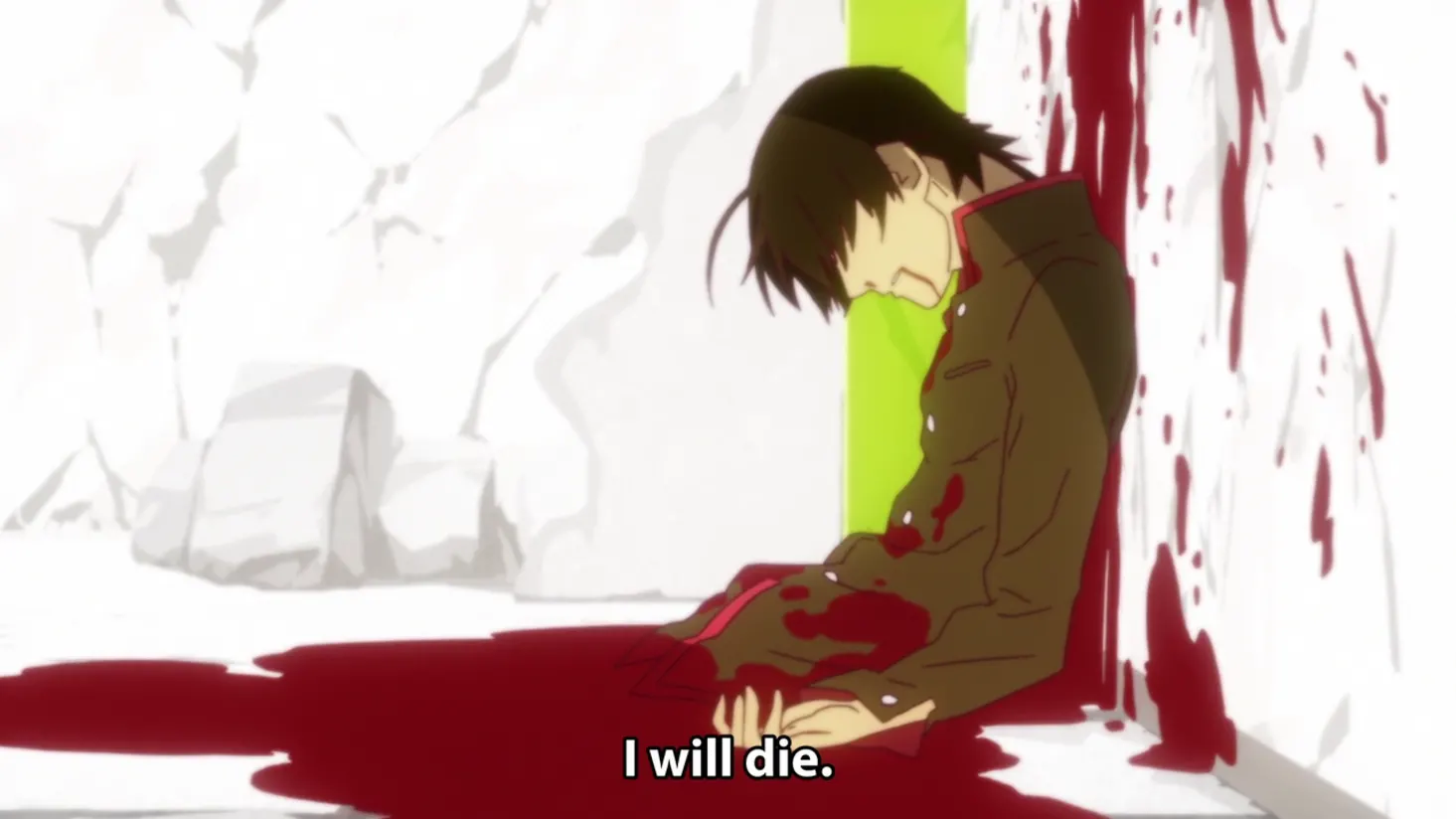
Shinobu – in what seems to be an oddly common anime trope (such as in CLAMP’s X) – summons a sword from within her body that apparently kills only apparitions and not people. Koyomi then swallows the entire massive sword and provokes Tsubasa-cat to attack him – bisecting his body in the process, but also damaging the cat spirit in the act. Once again, Koyomi spews oceans of blood, and it is no doubt this particular scene that earned this disc an “18″ certificate in the UK. Though as already revealed in the Tsubasa Cat section of Bakemonogatari, it is actually Shinobu herself who saves both Tsubasa and Koyomi by draining the energy from the cat spirit, essentially making it dormant. From this point forwards, Tsubasa’s relationship to her cat form is on a subconscious level – it only appears at times of stress.
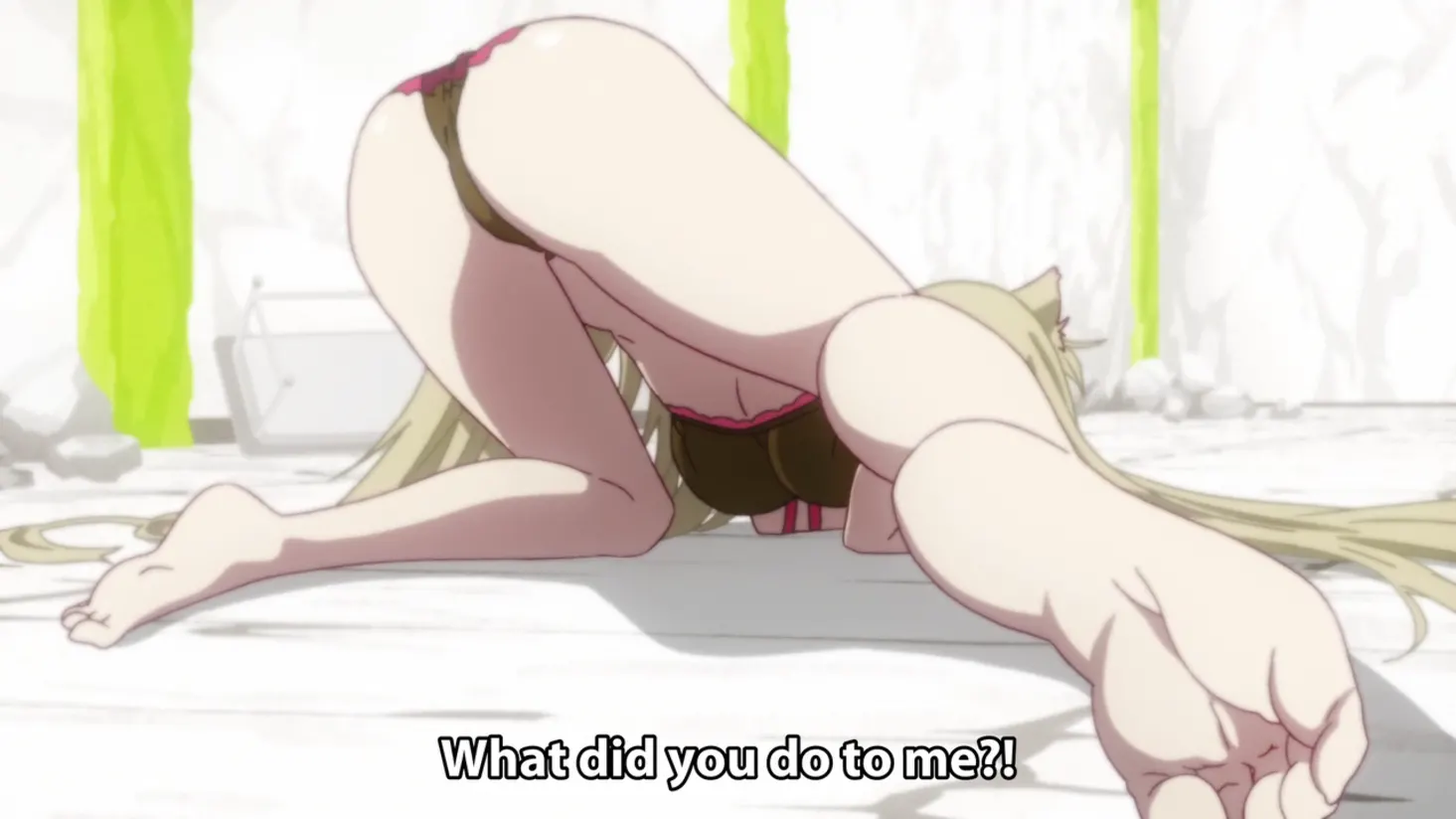
These events cause Koyomi to recontextualise his relationship with Tsubasa. Although in many ways he still views her as a perfect woman (compare with the way he speaks with her in chronologically later segments), and he states he would happily die for her, he realises he is not actually in love with her. I’m afraid I did not understand how his thought processes reached this conclusion, I did not feel it was particularly well communicated by the story. Perhaps I am just dense? The story also does not directly address what Tsubasa’s feelings are for Koyomi – though we know that the next time the cat appears it is due to the threat Tsubasa perceives from Hitagi Senjogahara and her relationship with Koyomi. Although the Monogatari series is full of conversations – in fact the characters never shut the hell up – they don’t always make their intentions or thoughts particularly clear, though perhaps that is also like people in real life.
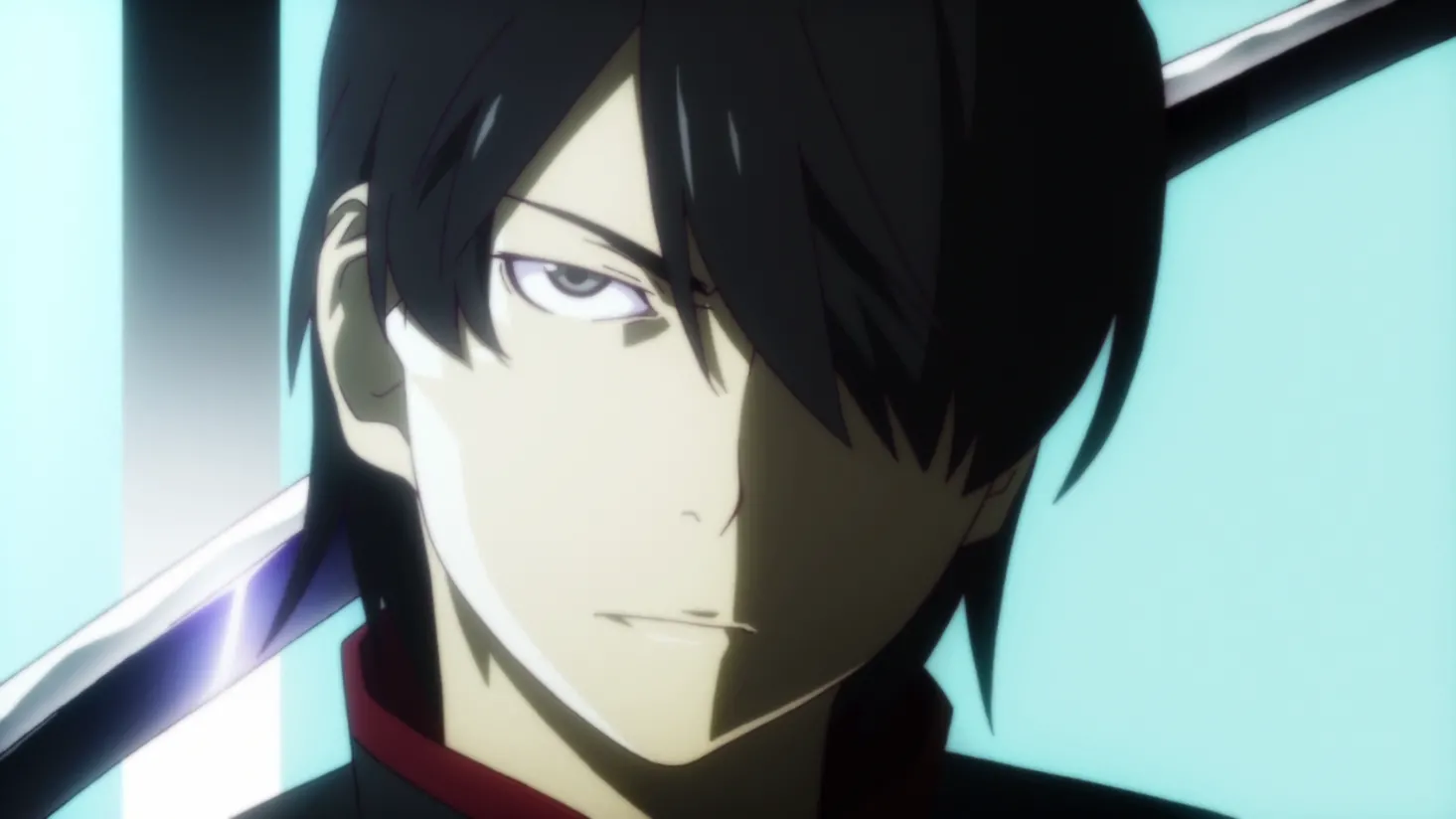
Overall this was a pretty entertaining four episodes of anime. It raised some interesting questions about familial relationships and sublimated emotional trauma, though I don’t think it offered any particularly insightful answers. It did offer more depth to Tsubasa Hanekawa’s personality, and she is much more interesting than she first appears. Koyomi is still a creep, but he at least tried to be a self-sacrificing hero at the end. I loved how Shinobu turned up to show the stupid boy how it was done, though. I’d be happy if they got rid of Koyomi altogether and just made it the Shinobu and Tsubasa-cat show. Surely that’s a great idea for a spin-off?
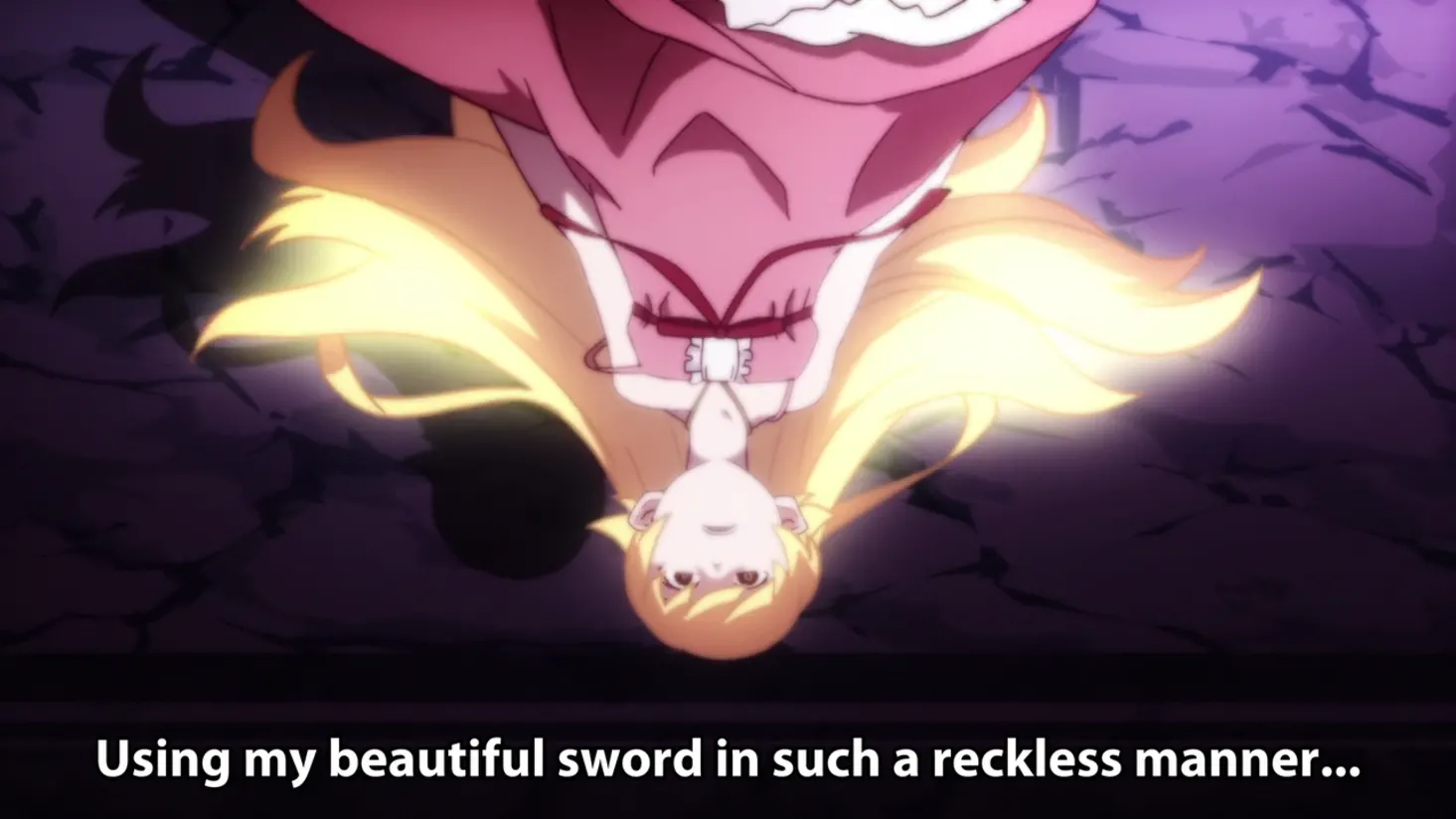
That brings us to the end of season one of Monogatari. It has been a interesting ride. I can’t say I have enjoyed every aspect of this production but the animation and music have been uniformly top-notch. I particularly liked the opening sequence for Nekomonogatari: Black, the relaxing music and stylish design complemented each other very well. I’ve met some fascinating characters who all talk just a bit too much, plus endured some ultra-creepy fan service. There is certainly a lot to talk about with this series, and each review has taken a lot of work, and multiple viewings. The Kizumonogatari movies will be released on Blu-ray in the UK monthly, with the first due on June 10th, so I’ll look those out before progressing to season 2. See you again soon with my thoughts on that first movie!
Directors: Akiyuki Shinbou, Tomoyuki Itamura
Writers: Akiyuki Shinbou, Fuyashi Tou
Format: Blu-ray
Language: Japanese with English Subtitles
Region: Region B
Classification: BBFC 18
Original Japanese TV Broadcast: December 31st 2012
Distributor: MVM Entertainment
UK Blu-ray Release Date: 25 Aug. 2014
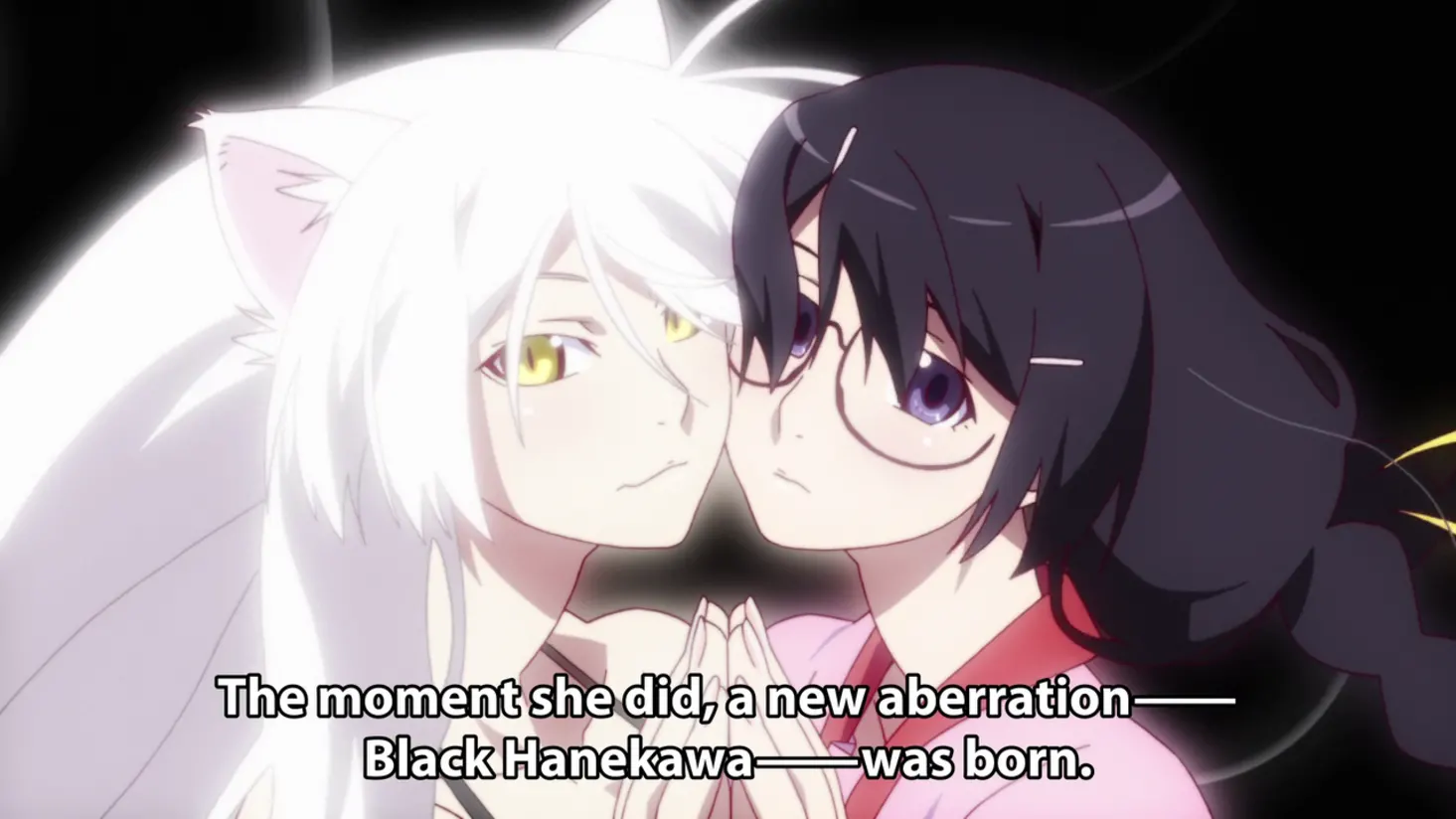
You’re reading AniTAY, the anime-focused portion of community-run blog Talk Amongst Yourselves. AniTAY is a non-professional blog whose writers love everything anime related. To join in on the fun, check out our website, visit our official subreddit, follow us on Twitter, or give us a like on our Facebook page.

Get involved!
Comments